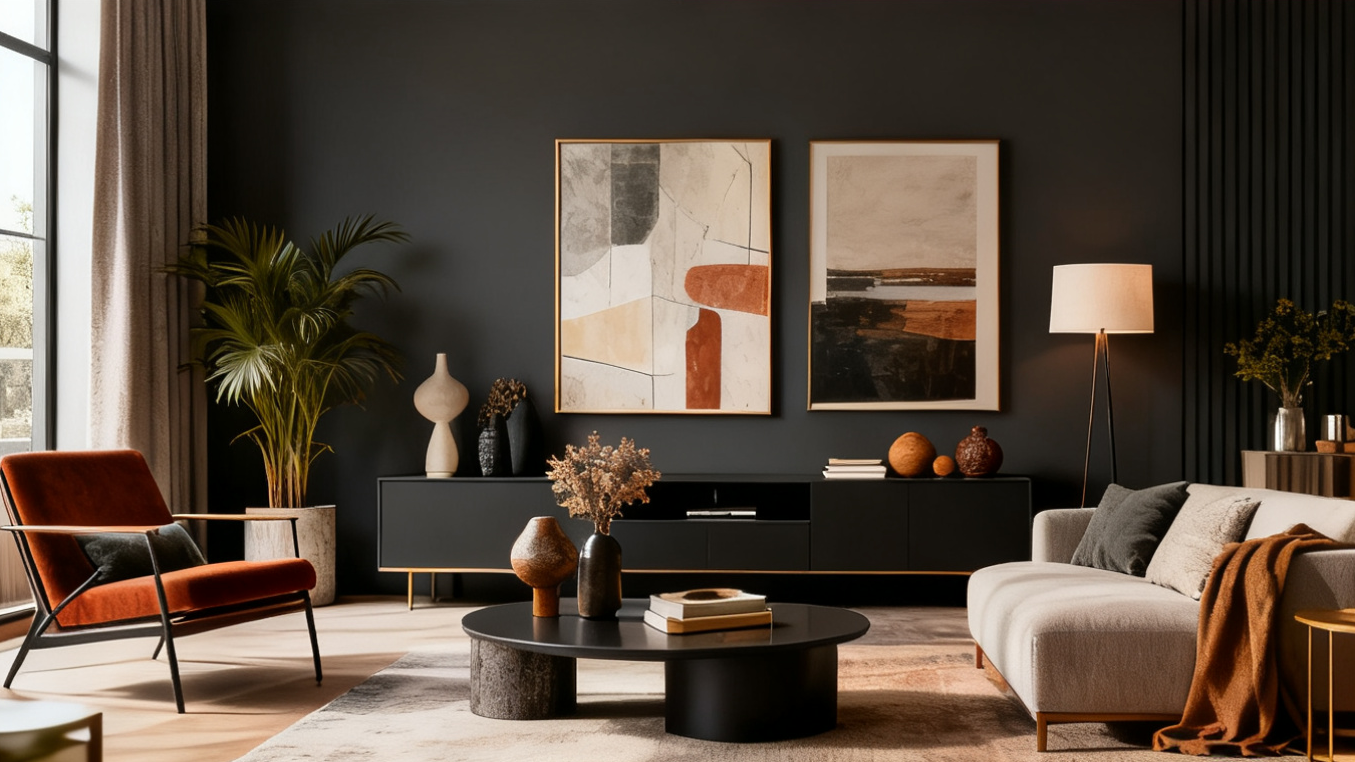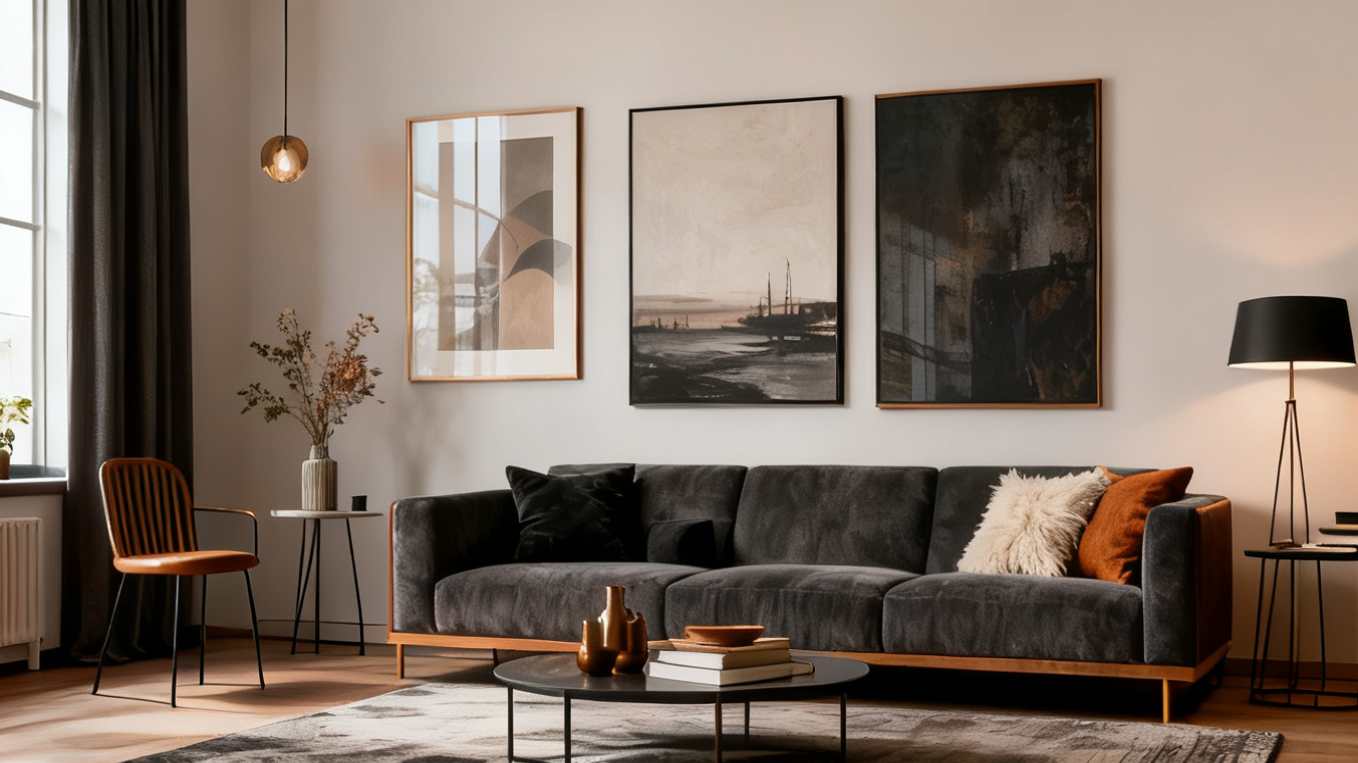
Decorative Objects fill your home with stories. When you look around, each item can remind you of a moment, a person, or a place. Maybe an old vase belonged to your grandmother. A bold painting might capture your favorite city. Your home becomes your canvas.
Key Takeaways
Decorative Objects share your story. Pick things that help you remember important times or people. This makes your home feel special.
Combine heirlooms with cool new items to add style. Show family treasures next to new things. This lets others see your history and taste.
Use color and texture to show who you are. Choose colors that make you feel good. Make a mood that matches your personality.
Decorative Objects and Storytelling

Memory and Meaning
Decorative Objects are not just for filling space. They help you remember people and special times. If you put a graduation photo or a trip souvenir on a shelf, you make a story in your home. Studies say that objects linked to memories can make you feel happier and more connected. These things can start talks and help you remember good times. You might make a table with keepsakes, or put letters and photos in an old suitcase. Some people use a wall to show pictures from different times in their lives.
Tip: Try making a time capsule or custom art for big events. These things can help you remember your wins and important moments.
Identity in Design
Your home shows others who you are. Decorative Objects let you share your style and story. In many cultures, people use carved wooden masks or totem poles to honor their roots. The way you pick and show objects can show pride in your family and past. You might pick bright colors or special art that fits your personality. Some people mix old family things with new items, showing both tradition and modern style.
Showing art that means something to you makes your space special.
Adding things like favorite colors or special accessories shows your taste.
Sharing family items or personal things with guests shows you are proud of your story.
Decorative Objects help you make your house feel like your own home.
Choosing Meaningful Pieces

Heirlooms and Artifacts
Heirlooms and artifacts can turn your home into a place full of stories. When you choose to display these special items, you bring your family’s history into your daily life. You might have a watch from your grandfather, a quilt your aunt made, or a set of old books that have been passed down. Each piece holds memories and connects you to your roots.
Here are some common types of heirlooms and artifacts you might find in homes:
Jewelry and timepieces
Furniture
Textiles like quilts or blankets
Photographs and important documents
Books and family bibles
Kitchenware, such as old dishes or utensils
Military memorabilia
Musical instruments
Clothing and accessories
Fine art and decorative items
Heirlooms do more than decorate a room. They create emotional connections to your family’s past. These items add warmth and character to your space. When you share their stories with guests, you invite conversation and keep family traditions alive.
When you pick which heirlooms to display, think about what makes you feel proud or happy. Place them where you can see them every day, like on a shelf or a table in your living room. Mixing old pieces with new ones gives your home a unique style and helps your story shine.
Unique Finds
You can also fill your home with unique finds that tell your own story. Look for items that remind you of special trips, fun adventures, or important moments. Handcrafted pieces, travel souvenirs, and vintage treasures all add personality to your space.
Here are some tips for choosing meaningful Decorative Objects:
Pick pieces with meaning. Choose items that bring back good memories or represent your experiences, like a mug from a favorite trip or a handmade bowl from a local artist.
Focus on color, texture, and patterns that you love. These details make your space feel more like you.
Add contrast for a wow effect. Mix different textures and colors to make your room interesting.
Anchor your space with a star piece. Find one standout item, like a bold painting or a unique sculpture, to draw attention.
Layer with little touches. Add smaller items around your main pieces to create depth and character.
Handcrafted items and travel souvenirs make your home feel special. Rugs, mugs, and blankets from your travels can remind you of adventures. Wall art and photo frames can capture your favorite memories. When you buy handmade decor, you also support local artists and help keep traditional crafts alive.
Authentic materials and textures matter, too. Real wood, stone, or handwoven fabrics add depth and warmth to your rooms. These materials engage your senses and make your home feel cozy. When you touch a rough pottery vase or a soft wool blanket, you connect with the story behind the object.
Tip: Choose Decorative Objects that inspire you or lift your mood. Art that tells a story or makes you smile will always have a place in your home.
Arranging Decorative Objects
Creating Displays
You can turn any surface in your home into a story by arranging your favorite items with care. Start by gathering pieces that share a color or theme. This helps your display look unified. Try grouping items in odd numbers—three or five objects often look more interesting than two or four. Place heavier or larger items in the center, then arrange lighter pieces around them. If you want to see how things look together, lay them out on the floor first before moving them to a shelf or wall.
Want your display to pop? Mix shapes, heights, and textures. Use trays or boards to group smaller items so they feel like one unit. Leave some empty space so your arrangement doesn’t feel crowded. You can also use lighting to highlight your favorite object. A spotlight or lamp draws attention and makes your display shine.
Technique | Description |
|---|---|
Lighting | Use strong contrasts or spotlights to make objects stand out. |
Focal Point | Start with a main item and build around it for a natural look. |
Background Light | Keep the background dim so your main piece gets noticed. |
Tip: Keep your displays flexible. Move things around until you find a look that feels just right.
Layering Stories
Layering adds depth and personality to your space. Begin with big pieces like furniture or rugs. Add smaller Decorative Objects, such as vases, books, or souvenirs, to build up your story. Place items from back to front instead of in a straight line. This creates a sense of dimension and keeps the eye moving.
Mix old treasures with new finds for an eclectic look. Use mirrors to add even more depth. Each layer should show a bit of your style and history. When you thoughtfully arrange your objects, your home tells a story that is all your own.
Personal Style and Color
Expressing Personality
Your home should feel like you. Color is one of the easiest ways to show your personality through Decorative Objects. You might love bold reds or calming blues. Maybe you mix bright pillows with soft rugs or add a pop of yellow to your kitchen. Each choice says something about you.
Here are some popular color palettes and what they can say about your style:
Color Palette | Description |
|---|---|
Warm Earth Tones | Rich browns and sunset shades make your space feel inviting. |
Laid-Back Blues | Soft blues create a calm, peaceful vibe. |
Rich Jewel Tones | Sapphire and ruby add drama and energy to any room. |
Sweet Pastels | Light pinks and blues feel gentle and relaxing. |
High-Contrast Neutrals | Black and ivory give a modern, graphic look. |
Eclectic Boho | Layered colors and pops of fuchsia show off a fun, creative side. |
Tip: Try mixing colors that make you happy. Your favorite shades can turn a plain room into your favorite spot.
Emotional Impact
Colors do more than look good—they change how you feel. Designers use color psychology to set the mood in every room. For example, blue can help you relax, while yellow brings energy and cheer. Green makes a room feel balanced and fresh. Red adds excitement and can spark conversation.
Color | Effect on Mood |
|---|---|
Warm Colors | Make spaces cozy and welcoming. |
Cool Colors | Help you relax and unwind. |
Personal Touches | Bring back memories and boost your mood. |
You can use color to match the mood you want. Want a peaceful bedroom? Try soft blues or sage green. Need a lively kitchen? Add some yellow or red. Even small touches, like a green vase or a blue pillow, can make a big difference.
Practical Storytelling Tips
Mixing Styles
You can mix styles in your home to tell a story that feels fresh and personal. Start by thinking about the mood you want in your space. Do you want it to feel calm, lively, or cozy? Once you know the feeling, you can blend different looks and pieces. Here are some tips to help you get started:
Use neutral furniture as your base. This gives you a blank canvas for other styles.
Pick a statement piece you love, like a bold chair or a colorful rug, and build around it.
Spread colors, patterns, and textures evenly across the room for balance.
Try mixing different textures and shapes. This keeps your space from looking too matched.
Stick to a simple color palette so everything feels connected.
Add items from your travels or culture to make your space unique.
Choose fun or surprising pieces to keep things interesting.
Make sure the size and color of each item fit well with the rest.
When you mix styles, you create a space that feels like you. Your home becomes a place where every object has a story.
Seasonal Rotations
Changing your Decorative Objects with the seasons can make your home feel new all year. When you swap out items, you match the mood of each season. Spring might bring soft pastels and light fabrics. Summer can add bright colors and playful patterns. In fall, you might use warm, earthy tones and cozy textures. Winter often calls for cool shades and rich, soft materials. This simple change keeps your home’s story fresh and helps you enjoy each part of the year.
Tip: Try rotating pillows, throws, or small art pieces to match the season. You will notice how your space feels different and more inviting.
Decorative Objects let you show your story at home.
Emily Post said, “The personal way to decorate is to use things that are yours; if you lost them, you would lose part of yourself.”
Gosling says, “We use our things to show others who we are.”
Begin picking items that mean a lot to you for your space.
FAQ
How do I start telling my story with decorative objects?
Pick one item that means a lot to you. Place it where you see it every day. Build your display around that piece.
Can I mix old family items with new decor?
Yes! Mixing old and new gives your space depth. You show your history and your style at the same time. Your home feels more personal.
What if my space feels cluttered with too many objects?
Try grouping items by theme or color. Keep only what you love. Rotate pieces each season to keep your space fresh and tidy.